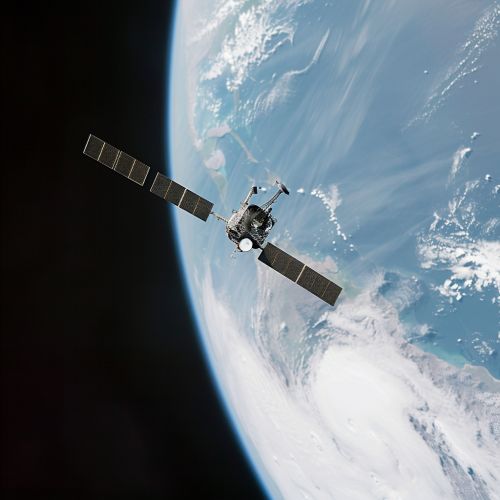Satellites
Introduction
A satellite is an object in space that orbits or revolves around a larger object. There are two kinds of satellites: natural (such as the moon orbiting the Earth) and artificial, created by humans. This article will focus on artificial satellites, which are launched into space for a variety of purposes, including communication, weather monitoring, navigation, and exploration of distant planets.


History
The concept of an artificial satellite was first proposed by Sir Isaac Newton in his published laws of motion. However, it wasn't until the mid-20th century that technology advanced enough to make this idea a reality. The first artificial satellite, Sputnik 1, was launched by the Soviet Union on October 4, 1957. This marked the beginning of the Space Age and sparked a race between the Soviet Union and the United States to establish dominance in space exploration.
Types of Satellites
Artificial satellites can be classified into several types based on their function:
Communication Satellites
Communication satellites are used for all types of data communication, including telephone calls, television broadcasts, and internet connectivity. These satellites are typically placed in a geostationary orbit, allowing them to maintain a constant position relative to the Earth's surface.
Weather Satellites
Weather satellites are used to monitor Earth's weather and climate. They provide meteorologists with the data necessary to predict weather patterns and track storms. These satellites can be in either polar or geostationary orbits.
Navigation satellites are a part of satellite-based navigation systems like the Global Positioning System (GPS). These satellites transmit signals that allow GPS receivers on the ground to determine their location with high accuracy.
Scientific Research Satellites
Scientific research satellites are used for all sorts of scientific research, including astronomy, atmospheric studies, and microgravity experiments. These satellites can be found in a variety of orbits, depending on their specific mission.
Military Satellites
Military satellites are used for reconnaissance, communication, and navigation. Some are used for strategic defense, such as early warning of missile launches.
Satellite Orbits
The path a satellite follows around an object is called its orbit. There are several types of orbits that satellites can occupy, each with its own advantages and disadvantages:
Low Earth Orbit (LEO)
Low Earth Orbit (LEO) is the region of space within 2,000 kilometers of the Earth's surface. Satellites in LEO have a short orbital period, often less than 2 hours. This makes them ideal for observation and imaging purposes, as they pass over the same location on Earth every few hours.
Medium Earth Orbit (MEO)
Medium Earth Orbit (MEO) is the region of space around the Earth above LEO and below geostationary orbit. Satellites in MEO have an orbital period of between 2 and 24 hours. The most common use for satellites in MEO is for navigation systems like GPS.
Geostationary Orbit (GEO)
Geostationary Orbit (GEO) is a circular orbit around 35,786 kilometers above the Earth's equator. Satellites in GEO appear to stay in the same place in the sky, making them ideal for communication and weather observation.
Polar Orbit
A polar orbit is one in which a satellite passes above or nearly above both poles of the planet on each revolution. This type of orbit is used for weather and earth observation satellites, as it allows for complete coverage of the Earth's surface.
Satellite Components
A typical artificial satellite has a number of components, including:
Payload
The payload is the part of the satellite that carries out the mission. It includes instruments for tasks such as communication, data gathering, scientific research, and navigation.
Power Source
Most satellites use solar panels to generate electricity, although some may also carry batteries or nuclear power sources for use when the sun is not available.
Propulsion
Propulsion systems are used to launch the satellite into orbit and to make adjustments to its orbit once it is there. These systems can include rockets and thrusters.
Guidance System
The guidance system is used to control the satellite's orientation in space. This can be important for pointing the satellite's instruments or antennas in the right direction.
Conclusion
Satellites play a crucial role in our daily lives, from enabling global communication to providing navigation services, from predicting the weather to conducting scientific research. As technology continues to advance, the capabilities of satellites will continue to expand, opening up new possibilities for exploration and understanding of our world and the universe beyond.
